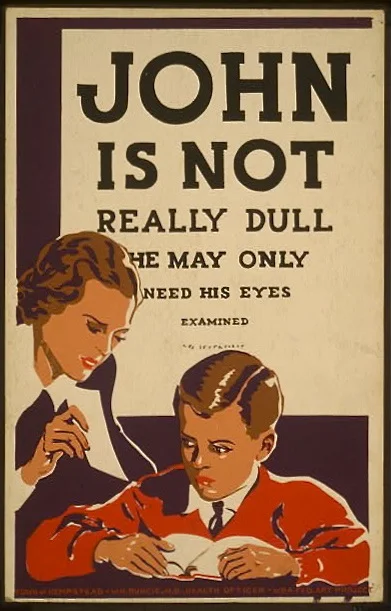Stamp Academy: Celebrating the Posters of the WPA
The Works Projects Administration (WPA), originally the Works Progress Administration, was the largest and most ambitious agency in FDR's New Deal. The WPA appropriated 6.7 percent of the country's GDP in 1935—$4.9 billion—to hire millions of unemployed Americans for public works projects. Many were recruited to construction projects, erecting new roads, bridges and buildings across the nation. Others were responsible for creating some 475,000 works of art, from pieces of music to museum scenery to public murals and sculptures.
And they made posters. LOTS of posters.
At the height of the Federal Art Project, cities in 18 states had Poster Project offices, printing 2 million posters of approximately 35,000 designs.
Between 1935 and 1943 the WPA's Federal Art Project printed over two million posters in 35,000 different designs to stir the public's imagination for a variety of civil ideals.
The WPA posters recruited for trades — men for the Navy and Civilian Conservation Corps, and women for domestic employment.
Education, safety, and community programs were all common topics to promote.
Health was also an important government concern. The poster images emanated strength and determination as a byproduct of knowledge, and encouraged people to contact public health agencies for information.
Artists employed wit and humor to tackle serious subjects like syphilis — as seen in the 1937 poster that depicts a dinosaur in a swamp under the words “As old as creation, syphilis is now curable.”
The WPA also went to bat for the dairy industry in posters promoting milk as a health tonic.
Domestic tourism and nature conservation were also widely promoted.
Among the most iconic WPA posters are those that were created in a series celebrating the country’s 58 National Parks.
Between 1938 and 1941 the WPA Federal Poster Project printed silkscreen prints for 14 National Parks before being halted by the onset of WWII.
Of the 1,400 National Parks posters printed, just 41 posters are accounted for today, and two of the original 14 designs—Wind Cave and Great Smoky Mountain—have been lost completely.
"These posters had disappeared into history," says Doug Leen, aka Ranger Doug, a former park ranger of seven years at Grand Teton, a nature photographer, a silkscreen artist, and the self-styled 'Ranger of the Lost Art.' "For 50 years they were gone, totally gone.”
"In 1971, I found an original," says Ranger Doug. "I fished one of Grand Teton out of a pickup truck that was going to the dump."
The poster Ranger Doug found at Grand Teton National Park in 1971, which he initially hung on the wall of his log cabin at Jenny Lake for his personal enjoyment.
His curiosity piqued, Doug spent the next two decades hunting for similar posters and the story behind them.
For the small collection of authentic WPA posters we do have, America owes a debt to people like Ranger Doug who have spent years tracking them down and preserving them.
The WPA posters were created to encourage people to enjoy America and to pump money back into the country’s economy, but when the war began, they were torn down, crayon-colored over by kids, and eventually ended up in the trash. Only 2,000 posters have survived to this day; less than 0.1%!
Posters produced between 1941 - 1943 focus largely on the war effort — such as asking people to donate binoculars to the Navy, and pleading for citizens to not trust the telephone lines or their neighbors.
And Now They’re Stamps
In March 2017, in honor of these important works of art, the U.S. Postal Service released a collection of Forever stamps featuring 10 iconic posters created through the WPA Federal Art Project.
It is fitting that WPA posters have been memorialized on postage stamps because President Roosevelt not only understood the importance of visual design and it’s ability to communicate powerful messages, but he also had a lifelong fascination with stamps as artwork!
“Work Pays America! Prosperity” - New York City, ca. 1936-41
“The National Parks Preserve Wild Life” - New York City, ca/ 1936-39
“Visit the Zoo” - Pennsylvania, ca. 1936-41
“See America Welcome to Montana” - New York City, ca. 1936-39
“Discover Puerto Rico, U.S.A.” - New York City, ca. 1936-40
“Field Day” - Chicago, 1939
“Work With Care” - Philadelphia, ca. 1936–37
“Hiking” - Chicago, 1939
“City of New York Municipal Airports” - New York City, ca. 1936–37
“The United States’ First Foreign Trade Zone” - New York City, 1937
Antonio Alcalá served as the art director of the project and designed the stamps with Maribel O. Gray.
#WPAForever

















































The story of Snailbox begins when hitched twosome Amanda and Zach decided to tackle a problem they’d been wrestling for years: How to stay prepared for important, card-worthy occasions.